The start of 2015 provides us with an opportunity to review New York’s significant tax reform impacting all corporations doing business in New York during 2015 and beyond. Overall, the new tax regime created by the 2014-15 New York State Budget is designed to be more favorable to New York based taxpayers than the current tax system by shifting some of the tax burdens to out of state businesses. This alert will focus on the most significant changes created by the tax reform.
Tax Rates
One taxpayer friendly change is the newly reduced and/or zero tax rates. Under the previous tax system, New York required four different methods of calculating tax each year: Entire Net Income (ENI) Tax, Capital Base Tax, Fixed Dollar Minimum (FDM) Tax and Alternative Minimum Tax (AMT) with the highest tax calculation being paid by the taxpayer. Under the new Legislation, the alternative minimum tax has been repealed leaving only three tax calculations being required. Additionally, certain tax rates are gradually reduced and/or eliminated. For Instance, ENI tax on Qualified New York Manufacturer is 0.0%. Qualified Emerging Technology Companies (QETCs) tax rate is gradually reducing from 5.7% in tax year 2015 to 4.875% in tax year 2018 and thereafter. Beginning January 1, 2016, a reduced flat rate of 6.5% will apply to all other taxpayers. Moreover, the Capital Base Tax for Qualified New York Manufacturers and QETCs, Cooperative Housing Corporation and remaining other taxpayers is gradually reduced for tax years 2015 through 2020 and completely eliminated in the year 2021 and thereafter. In addition, FDM tax on Qualified NY Manufacturing and Emerging Technology Companies has been reduced for tax year 2015 through 2018 and consistent thereafter. Unfortunately, for all other taxpayers, additional tax brackets have been added to the FDM tax increasing the maximum tax payable to $200,000. Lastly, the tax on subsidiary capital is repealed by the new legislation.
Nexus
New York’s corporate tax reform has expanded its historic nexus standards by adding a new economic nexus standard. Economic nexus is based on specified annual dollar threshold of receipts derived from within the state. Under the new economic standard, a corporation which derives $1 million or more of its gross receipts from activities within the state is deemed to create nexus subjecting them to tax in New York. This change targets out-of-state corporations which do not have a physical presence in the state but would be subject to corporate income tax in New York due to economic nexus standard.
W&G Observation: New York’s economic nexus provision will likely have the greatest impact on service providers who do not have a physical presence in the state. Public Law 86-272 provides relief to sellers of tangible personal property whose only activity in a state is the mere solicitation of sales.
Apportionment of Business Income
Business income will now be apportioned using a customer based sourcing rule which allocates receipts to the state in which the benefit is received by the purchaser. The following new sourcing rules have been adopted as of January 1, 2015: (1) receipts from loans secured by real property would be sourced to New York if the real property is located in the State, (2) receipts from loans not secured by real property would be sourced to New York if the borrower is located in the State, and (3) receipts from services would generally be sourced to New York if the customer is located in the State.
W&G Observation: This is another provision designed to shift the tax burden from New York based businesses to out of state corporations. This may also lead to an out-of-state corporation having the same income sourced to both New York and the state where the corporation is based. For example, New Jersey is a state which sources receipts from services to the state where the service is performed. Therefore, a New Jersey based corporation which performs services for a New York customer in New Jersey will have the receipts from these services allocated to both New York and New Jersey. Unfortunately, there is current no relief offered to taxpayers with this fact pattern.
Net Operating Loss (NOL)
Beginning January 1, 2015, New York has adopted significant changes to its Net Operating Loss Deductions (NOLD) including establishing an NOL carryback period of 3 years with the exception that no NOL generated in 2015 or later years can be carried back to a tax year prior to 2015, the NOLD is no longer limited by the federal NOLD source year or amount, and the NOLD is calculated based on apportioned losses and is allowed as a deduction against apportioned business income of another tax year. The 20-year NOL carry forward period was not impacted by the tax reform.
W&G Observation: This modification is a welcome one for taxpayers as New York is now conforming with the Federal tax treatment of NOLs. The 3 year carryback provision will allow for taxpayers to immediately utilize the NOLs to recover prior taxes paid and receive much needed cash into the business.
For NOL carryovers incurred prior to 2015, New York has created a Prior Net Operating Loss Conversion (PNOLC) Subtraction to allow for utilization of these NOLs. The PNOLC is converts pre-2015 NOLS into post apportionment NOLs by applying taxpayer’s 2014 allocation percentage to them. The result is then divided by 6.5. This amount is referred to as the PNOLC subtraction pool. Taxpayers are given choice to use 1/10 of the PNOLC subtraction pool in each year for the next 20 years or use ½ of the PNOLC subtraction pool in 2015 and 2016. If the 1/10 of PNOLC a year method is chosen, any unused subtractions are carried forward to following years. However, if the ½ of the PNOLC method is selected, the taxpayers cannot carry forward any unused portion beyond 2016.
W&G Observation: Taxpayers will be faced with a critical decision during 2015 when determining which method to elect for deducting their PNOLC Subtraction. Some taxpayers may choose the ½ of PNOLC method to accelerate these deductions while other may opt for 1/10 of PNOLC subtraction option to carry forward unused NOLs to future years to not risk losing any subtractions not utilized in the 2015 or 2016 tax years.
Tax Credits
The 2014-2015 New York budget enacted a number of tax credits designed to stimulate investment and employment in New York. One provision was to create a refundable tax credit equal to 20% of real property taxes paid by manufacturers beginning January 1, 2014. Tax credits aimed at employment were the creation of a credit for hiring employees with development disabilities and the expansion of the Youth Works tax credit to $1,000 effective January 1, 2015. Additionally, the Empire State Commercial Production credit has been extended through 2016.
While New York State had a number of favorable changes in its Corporate Tax Reform, many of the changes have created additional complexities and decisions to be addressed by corporate taxpayers. In addition to the items discussed above, New York revised the requirements for combined reporting and merged the Bank Franchise Tax with the Corporate Franchise Tax. We encourage you to consult your tax advisor to determine how these complicated provisions will impact your business.





